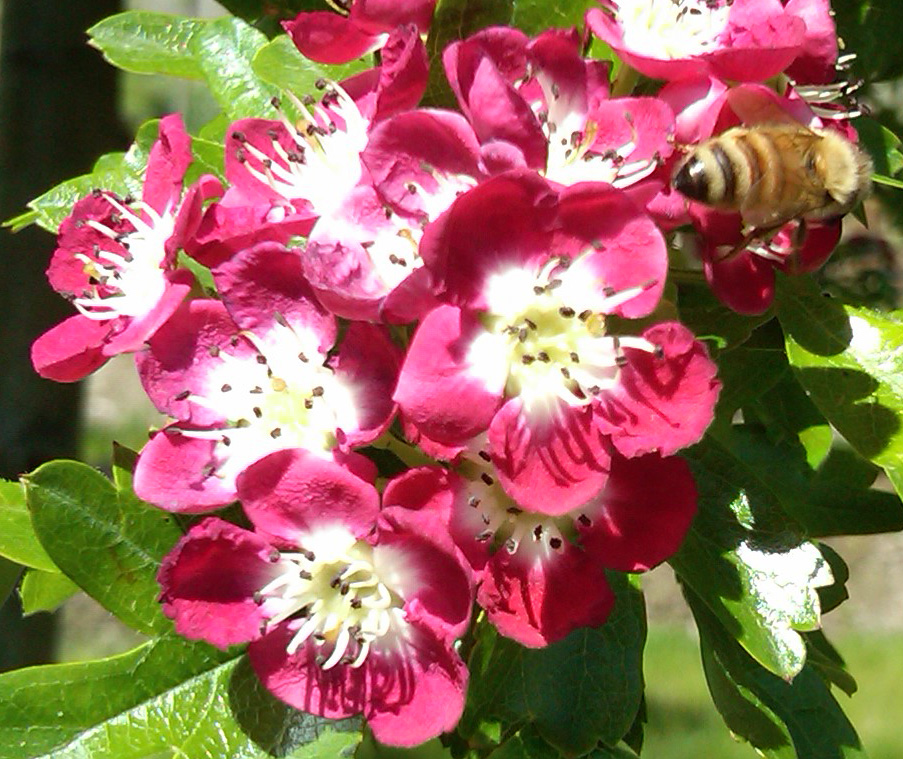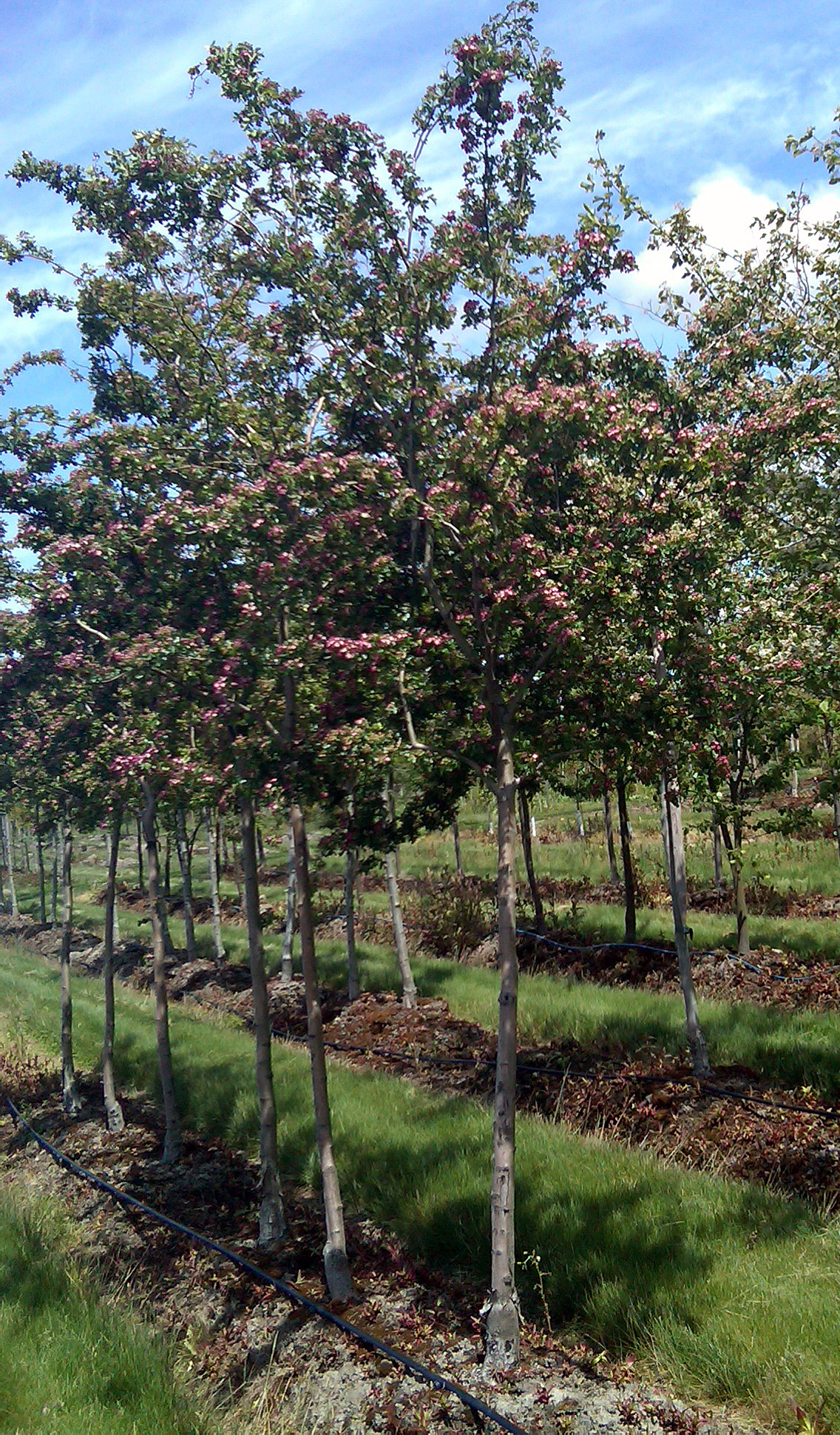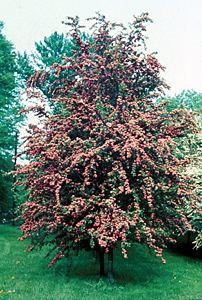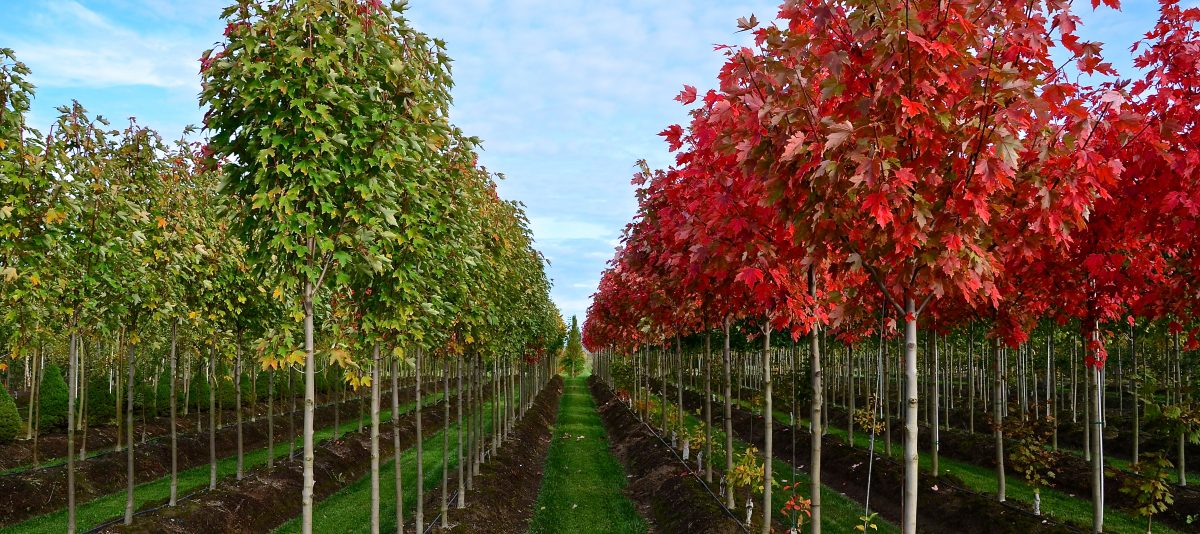Crimson Cloud Hawthorn
Crataegus laevigata ‘Crimson Cloud’
 The Crimson Cloud Hawthorn is another great tree to put in your arsenal of small tough colorful landscape varieties. Of greatest significance is the fact that it is the perfect substitute for the very problematic Paul’s Scarlet Hawthorn. Do not consider using Paul’s Scarlet unless you want defoliated trees by early August. The Crimson Cloud Hawthorn is resistant to the leaf blight that afflicts the Paul’s Scarlet Hawthorn. The Crimson Cloud is similar in size and form, and the flowers are equal, if not superior, to the Paul’s Scarlet. Although the flowers might be small, they are plentiful and spectacular in color, detail, and fragrance. Oh, the fragrance!
The Crimson Cloud Hawthorn is another great tree to put in your arsenal of small tough colorful landscape varieties. Of greatest significance is the fact that it is the perfect substitute for the very problematic Paul’s Scarlet Hawthorn. Do not consider using Paul’s Scarlet unless you want defoliated trees by early August. The Crimson Cloud Hawthorn is resistant to the leaf blight that afflicts the Paul’s Scarlet Hawthorn. The Crimson Cloud is similar in size and form, and the flowers are equal, if not superior, to the Paul’s Scarlet. Although the flowers might be small, they are plentiful and spectacular in color, detail, and fragrance. Oh, the fragrance!
This tree is perfect for a small up-close garden specimen, or tough enough to be a long-lived street tree. Beware, however, that plentiful flowers attract plentiful bees for a short period of time. The temporary inconvenience (if you believe bees are an inconvenience) is well worth it.
 Leaf form is relatively small, ½ to 2 ½ inches long and ⅔ times as wide, with 3 to 5 serrulate, obtuse, or acutish lobes. Lobes are rounded and pointed, cuneate, glaborous, and dark green as described by Dirr. The flowers are a dark pinkish red with a white star in the center, which turn to glossy red fruits of relatively small size, no more than ½ inch long. Form can be a little erratic if not staked and properly pruned in early life. Laterals can become a little leggy and grow in all directions. Some folks actually like this characteristic, which is so different than the predictable maples and oaks.
Leaf form is relatively small, ½ to 2 ½ inches long and ⅔ times as wide, with 3 to 5 serrulate, obtuse, or acutish lobes. Lobes are rounded and pointed, cuneate, glaborous, and dark green as described by Dirr. The flowers are a dark pinkish red with a white star in the center, which turn to glossy red fruits of relatively small size, no more than ½ inch long. Form can be a little erratic if not staked and properly pruned in early life. Laterals can become a little leggy and grow in all directions. Some folks actually like this characteristic, which is so different than the predictable maples and oaks.
 This Hawthorn is thorn-less. The ultimate size is around 25′ tall by 20’ wide. We have found them to be fairly easy to transplant, and they are somewhat drought tolerant. This tree becomes tougher with age, and I predict it to be a long-lived tree in favorable conditions. The Crimson Cloud Hawthorn is one more example of a little-known and underused tough urban tree that more folks should consider.
This Hawthorn is thorn-less. The ultimate size is around 25′ tall by 20’ wide. We have found them to be fairly easy to transplant, and they are somewhat drought tolerant. This tree becomes tougher with age, and I predict it to be a long-lived tree in favorable conditions. The Crimson Cloud Hawthorn is one more example of a little-known and underused tough urban tree that more folks should consider.
As always, let me know your experience with this and other trees in the urban landscape.
ISA Certified Arborist #0135
ASCA Registered Consulting Arborist #356 CLICK HERE FOR MORE TREE PROFILES
Certified Tree Risk Assessor #PNW-0327
